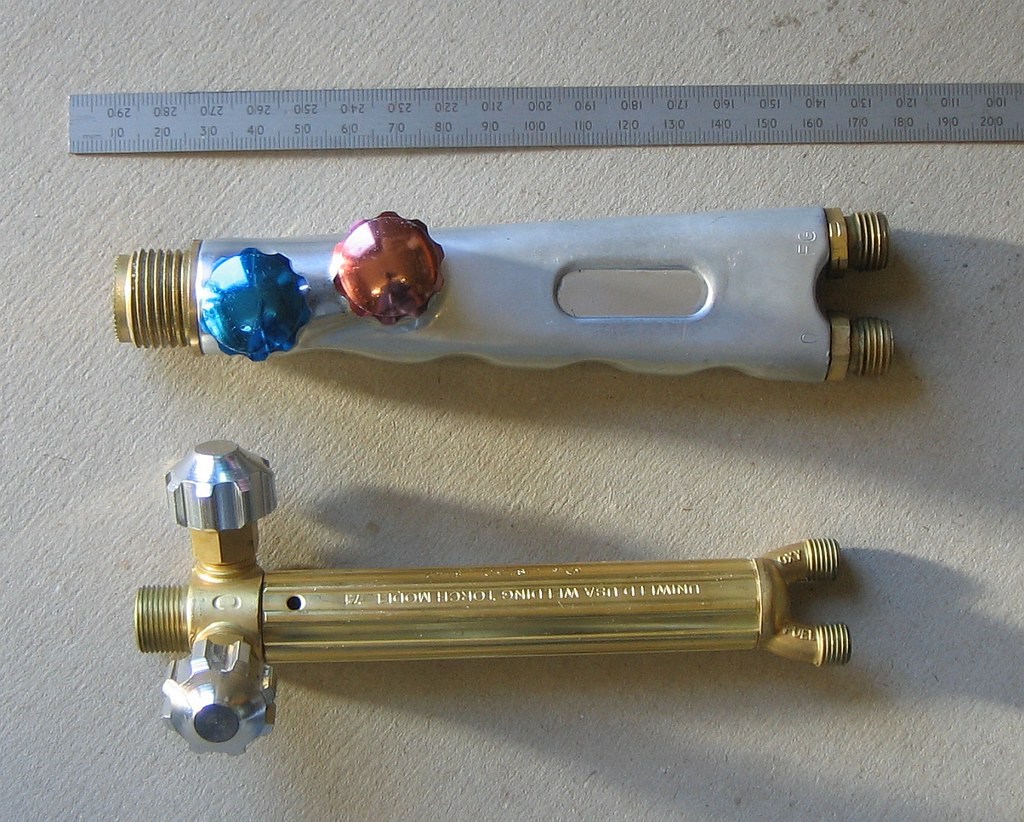One thing that I lacked when deciding whether to follow the usual torch recomendations here, or whether to stick with what's readily available locally was side by side comparison.
There are plenty of photos of Victor, Harris, Uniweld, Meco, etc, etc but none of them side by side with typical "lightweight" torch in UK.
So here it is (for the UK guys):

As you can see the lightweight shank is almost exactly the same length as Uniweld 71 (freshly arrived from US).
Both knobs are suitably chunky, although Uniweld ones are not colour coded.
Close proxiemity of the knobs on lightweight torch is PITA and often causes propane to be knocked out of adjustment when using oxygen knob (and vice verse).
Uniweld (and similar) torches seem very much better in this regard.
The weight of Uniweld is 185 grams and lightweight torch is 275 grams - not much in it afaic.
The shape of the handles - I've never yet used Uniweld in anger so it will be interesting comparison, specially since I got used to flat handle of my old torch.
Main decider is easy and plentiful availability of fittings - I am finding now how expensive is having to buy everything from US...
One solution is Harris 15-4GB (i.e. old Harris 15-3 with UK fittings. The only such combination available for sale, as far as I know)


 Likes:
Likes: 


 Reply With Quote
Reply With Quote

Bookmarks